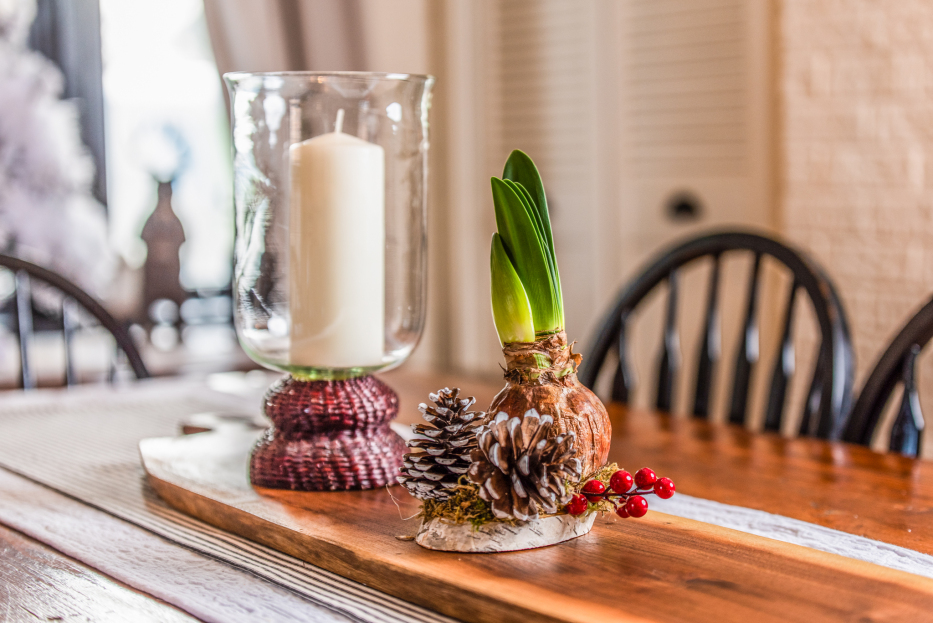
Amaryllis is a beautiful blooming plant popular for its festive appearance during the holiday season. Amaryllis are revered for their large, vibrant blooms in an assortment of colours, ranging from white to pink, salmon, red, burgundy, and bicolor varieties. These long-lasting flowers are grown from bulbs, and therefore do not require any additional water to bloom—making them exceptionally easy to care for and perfect as gifts!
Placing your Waterless Amaryllis in bright, indirect sunlight is ideal. Give your plant one quarter turn every few days to provide light evenly on all sides.
Amaryllis plants do not tolerate freezing and prefer temperatures of 18-24ºC (65-75ºF)
No water required! Amaryllis naturally store all the water and energy they need in the base of the plant therefore do not require water to bloom for the season. Simply place your Waterless Amaryllis in full or partial sun in your home and enjoy!
.jpg)
Amaryllis are typically sold as bulbs with only a few green leaves and possibly one or two stems showing. In 4 – 6 weeks your waterless amaryllis will grow and produce stems with up to up to 6 blooms each.
Once the blooms are spent, the plant will produce seed pods. New Amaryllis plants can be grown from seed; however, Amaryllis grown from seed may take from 3 to 14 years before producing blooms.
If you would like to save your bulb for next year, then you will have to plant it in a well-draining potting mix, and feed and water it like any other plant in order to replenish its nutrients. This can be a complex process with mixed results and is not recommended for bulbs that have a metal coil or that are coated in wax.
To get your Amaryllis to rebloom, after the last flower fades and the stalk turns from green to yellow, take care and cut the stalk near the top of the bulb.
Avoid harming the bulb's leaves when trimming the flower stems. After the flowers have faded, the amaryllis enters a growth stage where it starts accumulating energy for the following year's flowering. Providing sufficient sunlight to the plant during winter can be challenging, so relocate it to the brightest spot available or invest in a quality plant light. During this period, while the plant still has green leaves and is in active growth, ensure it receives ample water and nutrients.
Even if a few leaves perish, fresh ones will sprout again. Most people want their amaryllis to bloom during the holidays, so if you decide to grow your bulb outdoors during the warmer months, the plant should be brought back indoors around the middle of August. Put it in a cool location once it's inside (50-60 degrees F) and stop watering it. Once the leaves die, remove them, and move the plant to a cool and dark spot location for its rest period.
When you see the new flower stalk, move the bulb to a sunny and warm location for at least three weeks. This will stimulate the concurrent growth of the leaves and stem. Repot the bulb in fresh potting mix, water regularly, and move the plant to a sunny location. If your bulb was able to replenish its nutrients, you should see blooms in 4 to 8 weeks (about 2 months) after it begins to regenerate.